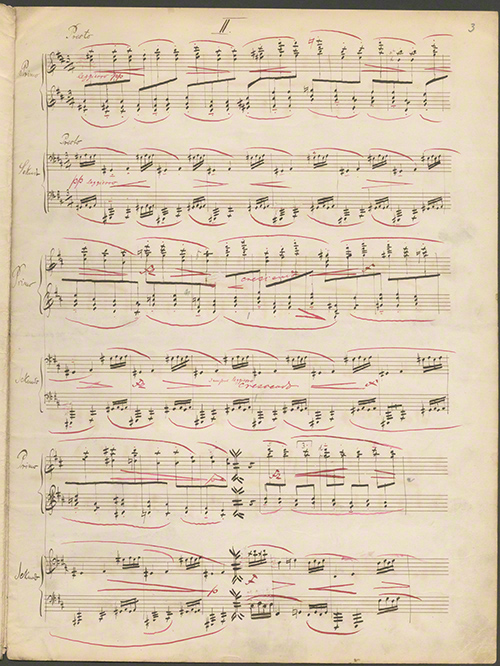1. Wiesbaden

In students’ concerts at the Wiesbaden Conservatoire, the first movement of the Piano Trio in B minor, Op. 2, is premiered in March, followed in April by the complete Violin Sonata in D major, Op. 3. Through the intercession of Hugo Riemann, Reger signs a seven-year contract with his English publishing firm of Augener & Co. in the summer. In April and May he receives certificates from Riemann and Hofkapellmeister Franz Mannstädt for admission to the one-year voluntary military year. In the annual report of the conservatoire for 1892/93 he is mentioned as a student in theory and as a teacher for piano and organ. Reger’s Cello Sonata in F minor, Op. 5, probably his most advanced Wiesbaden chamber music work, offers difficulties in understanding even to Riemann. In his first organ composition, Op. 7, he consciously puts aside the claim to originality in order to deliver technically sound, traditional journeyman's pieces. In December, with his Walzercapricen, Op. 9, he for the first time meets the publisher’s wish for light, sellable works, a request that will frequently be put before him for the rest of his life.
Postal items from this year whose sender or addressee is Max Reger.
Images from the Max Reger Foto Gallery that originate from this year and have a direct reference to Max Reger.
Object reference
Max Reger Biography – 1892, in: Reger-Werkausgabe, www.reger-werkausgabe.de/bio_1892.html, version 3.1.1, 31st January 2025.
Information
This is an object entry from the RWA encyclopaedia. Links and references to other objects within the encyclopaedia are currently not all active. These will be successively activated.